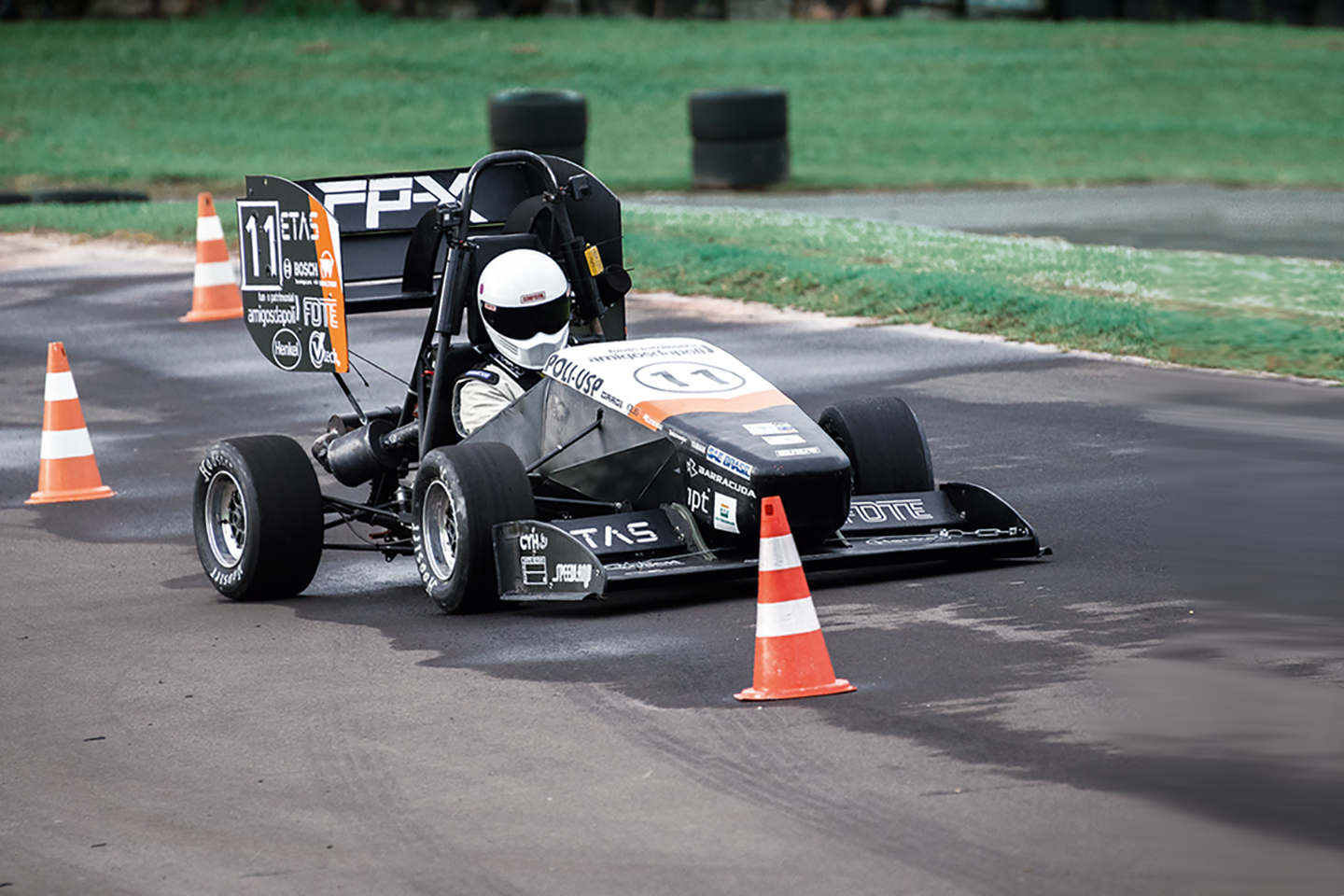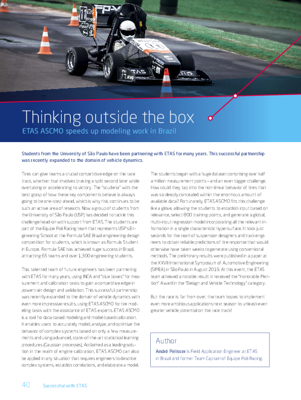Thinking outside the box
ETAS ASCMO speeds up modeling work in Brazil

Students from the University of São Paulo have been partnering with ETAS for many years. This successful partnership was recently expanded to the domain of vehicle dynamics.
Tires can give teams a crucial competitive edge on the race track, whether that involves braking a split second later while overtaking or accelerating to victory. The “scuderia” with the best grasp of how these key components behave is always going to be one-step ahead, which is why this continues to be such an active area of research.
Now a group of students from the University of São Paulo (USP) has decided to tackle this challenge head-on with support from ETAS. The students are part of the Equipe Poli Racing team that represents USP’s Engineering School at the Formula SAE Brazil engineering design competition for students, which is known as Formula Student in Europe. Formula SAE has achieved huge success in Brazil, attracting 65 teams and over 1,300 engineering students.
This talented team of future engineers has been partnering with ETAS for many years, using INCA and “blue boxes” for measurement and calibration tasks to gain a competitive edge in powertrain design and validation. This successful partnership was recently expanded to the domain of vehicle dynamics with even more impressive results, using ETAS ASCMO for tire modeling tasks with the assistance of ETAS experts. ETAS ASCMO is a tool for data-based modeling and model-based calibration. It enables users to accurately model, analyze, and optimize the behavior of complex systems based on only a few measurements and using advanced, state-of-the-art statistical learning procedures (Gaussian processes). Acclaimed as a leading solution in the realm of engine calibration, ETAS ASCMO can also be applied in any situation that requires engineers to describe complex systems, establish correlations, and elaborate a model.
The students began with a huge dataset comprising over half a million measurement points – and an even bigger challenge. How could they tap into the non-linear behavior of tires that was so deeply concealed within the enormous amount of available data? Fortunately, ETAS ASCMO fits this challenge like a glove, allowing the students to establish input based on relevance, select 800 training points, and generate a global, multi-input regression model incorporating all the relevant information in a single characteristic hypersurface. It took just seconds for the team of suspension designers and track engineers to obtain reliable predictions of tire response that would otherwise have taken weeks to generate using conventional methods. The preliminary results were published in a paper at the XXVII International Symposium of Automotive Engineering (SIMEA) in São Paulo in August 2019. At this event, the ETAS team achieved a notable result: it received the “Honorable Mention” Award in the “Design and Vehicle Technology” category.
But the race is far from over; the team hopes to implement even more ambitious applications next season to unleash even greater vehicle potential on the race track!
Author
André Pelisser is Field Application Engineer at ETAS in Brazil and former Team Captain of Equipe Poli Racing.
